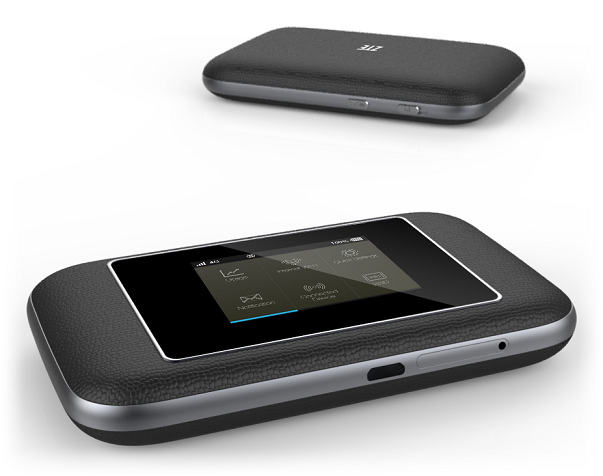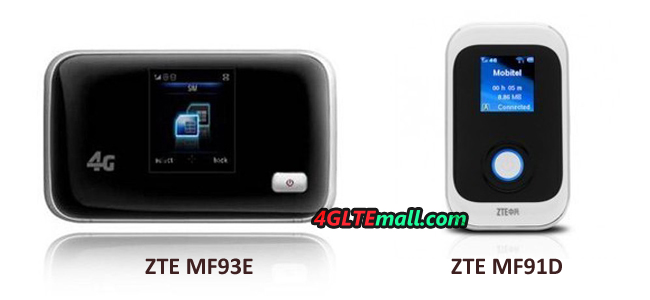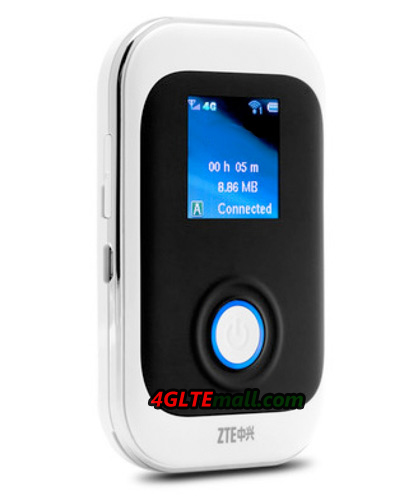The Chinese manufacturer “ZTE” has already announced a new hotspot router to the Mobile World Congress 2014 that will support LTE-Advanced with up to 300 Mbit/s for the first time. The new hotspot is named ZTE Flare. The device is equipped with the latest wireless technology. Here are the key data details.
|
ZTE Flare Features and Characteristics |
|
| Manufacturer | ZTE |
| LTE Category | LTE Category 6 (Cat6) |
| Chipset | Qualcomm Gobi ™ 9×30 with RF360 |
| Download Rate | 300Mbit/s |
| Upload Rate | 50Mbit/s |
| Supported network | CDMA/TD-LTE/FDD-LTE/WCDMA/GSM |
| Supported LTE Bands | Still unknown |
| Backward compatible with | unknown yet |
| Support LTE-Advanced | Yes |
| WLAN | 802.11ac/a/b/g/n, 2.4GHz/5GHz |
| WiFi chipset | Qualcomm VIVE QCA6174 |
| MIMO Support | MIMO 2 x 2 |
| Connector for external antenna | Yes, 2 TS-9 antenna sockets (Buy ZTE Flare Antenna) |
| USB Standard | USB 2.0 |
| Memory Card expansion | MicroSD up to 32GB |
| Battery | 2300mAh |
| Other functions | SMS, IPv6, IPv4 |
| Compatible operation system | Windows XP, Windows Vista, Windows 7 +8, Mac OS (10.4 or higher) |
| Release | Summer or fall 2014 |
From 2014 autumn, many European network providers are trying to launch the next generation LTE (So called LTE-Advanced). Based on new technology, the current data rates of up to 300Mbit/s could be achieved. However, in order to use the “LTE 2.0”, customers require new hardware so that the devices could support LTE Category 6. Both ZTE and its rival Huawei are also preparing the new models. Then ZTE announced its first Cat6 device for the second half of the year, named “Flare”.

Portable Router
ZTE Flare is called WiFi hotspot router, but it’s designed for mobile use and allows multiple users to share the wireless network through it. More powerful than Huawei E5786 LTE Cat6 mobile hotspot, ZTE Flare could support maximum up to 32 users to access internet. Based on the LTE Category6, the peak speed of 300Mbps will provide good surf experience for the users.
ZTE Flare is the world’s first device that uses Gobi chipset from Qualcomm, more specifically; it’s the “Gobi 9×30”. It’s made in ultra-thin 20nm process and consumes less energy than conventional radio chips. It’s said the new chipset will save almost up to 15 percent power. Per the LTE-A support and carrier aggregation, the qualcomm chipst can combine two RF bands of different spectral ranges, so that the LTE providers can operate up to 40MHz total bandwidth for data transmission. According to 3GPP standard, tapes 5, 10, 15 or 20 MHz are combines. In this way, data rates can reach up to 300mbps. The Gobi dominates beyond FDD and TDD modulation. The former is common in Europe and North America, the later specially in the Asian region.
Of course, according to the latest AC standard, ZTE flare can supports up to 540Mbps based on installed VIVE 502.11ac WiFi chip from Qualcomm. The WiFi chipset is compatible with previous 802.a/b/g/n and can be operated at 2.4GHz or 5GHz. As mentioned before, the flare hotspot allows end users of up to 32 devices. There are two additional ports for connecting external antennas (TS-9 socket).
Like other mobile hotspot router, there is a LCD screen on the front and users can see many important connection information, such as surf duration, radio standard or consumed volume. Many people want to know which one is better between ZTE Flare and Huawei E5786, we will give full explanation after we get the samples of them.

